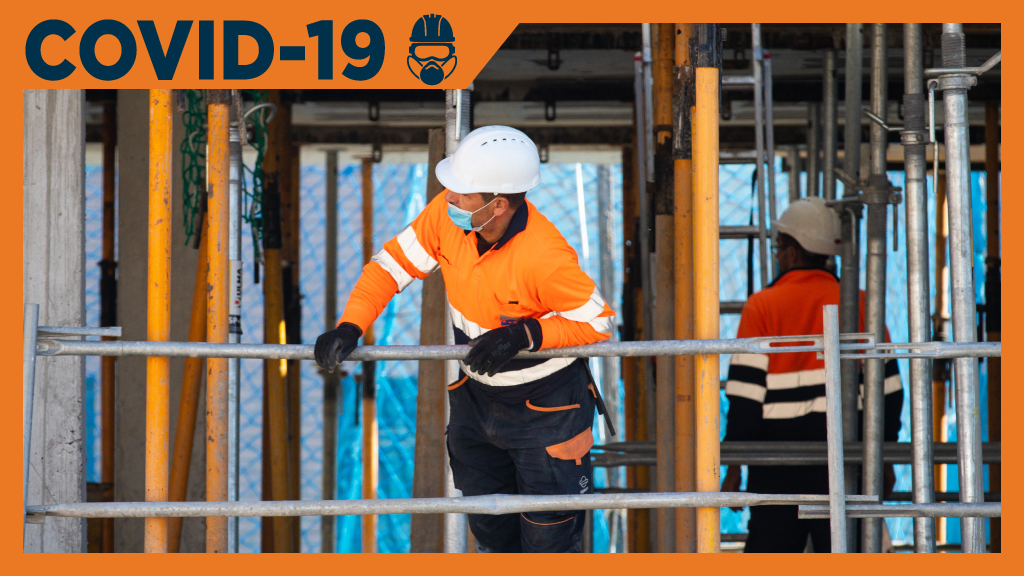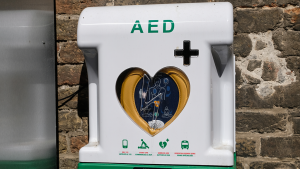There are countless guides for working in hot workplace environments during Ontario’s steamy summers but as two consultants offering advice during a recent COVID-19 health and safety webinar noted, never before have so many workers had to try to beat the heat while wearing personal protective equipment (PPE).
Occupational hygiene specialists Kelly Fernandes and Warren Clements, consultants with Ontario’s Workplace Safety and Prevention Services (WSPS), presented overviews on the use of PPE in a variety of workplaces during an event titled Adapting to a New COVID-19 Reality: The Use of Masks and Eye Protection and the Implications for Heat Stress and Other Concerns, held June 24.
During the pandemic the WSPS has been busy scanning the latest research, keeping up with new government policies from multiple jurisdictions and creating their own documents and presentations, Fernandes noted.
“Any adjustments we are making today may need further adjustment tomorrow,” she said.
Clements noted in a post on the WSPS website that the combination of COVID-19 and summer heat is “generating questions the health and safety community hasn’t encountered before.”
For instance, the post asked, should employers continue to use pedestal and wall-mounted fans to circulate air at hot jobsites? Could the fans’ airflow increase the risk of transmitting the virus?
Clements responded that airflow should be directed towards individual workers.
“If you can’t avoid directing it towards adjacent workers, then for now at least don’t use these fans,” he advised. “Instead, introduce other controls to help keep workers cool. For instance, look for opportunities to improve insulation and shielding of hot equipment.”
The WSPS will soon offer a new downloadable guide that will assess potential heat stress hazards linked to COVID-19, to be titled Heat Stress Management, A Practical Guide.
During the webinar the WSPS polled participants on PPE use during the pandemic and almost half — 262 of 536, or 48.9 per cent — indicated their workers were using masks.
Health and safety responsibilities of an employer are outlined in provincial legislation, with the Occupational Health and Safety Act (OHSA) general duty clause 25 (2)(h) requiring an employer to “take every precaution reasonable in the circumstances for the protection of the worker.”
Under section 5(a)(1) of the OHSA, employers must provide their employees with a workplace free from recognized hazards likely to cause death or serious physical harm.
Additionally, there is a Ministry of Labour guide produced in 2019 titled Managing Heat Stress at Work. Among recommendations mentioned during the webinar, the new ministry guide notes that the more time a worker has to acclimatize to a hot environment, the better their body handles the heat.
“The guide has considerable other valuable content,” Clements noted. “One example is a sample heat stress policy.”
Fernandes stressed that employers should always start a hazard assessment by working their way through the traditional hierarchy of workplace health and safety controls: elimination, substitution, engineering, awareness, administration and PPE.
“Now that we are into the summer months and hot temperatures, we may not be able to engineer controls for workers, but we can train them on the effect of heat stress,” she commented, suggesting that fell under the awareness rubric.
Clements noted that workers exposed to the sun all day suffer from what is termed environmental heat, while asphalt workers have the additional complication of heat derived from the job.
“I would use the description ‘process heat’ to describe the heat exposure,” he explained. “A manufacturing or work process is generating the heat.”
To deal with process heat, the province and the WSPS recommend that employers follow the guidance in the American Conference of Governmental Industrial Hygienists booklet, Threshold Limit Values, and also set up a heat stress control plan in consultation with the workplace’s joint health and safety committee or worker health and safety representative.
In his final comments, Clements urged employers to keep their eyes on public health sites for the latest recommendations on the use of PPE, continually review all stages of the hierarchy of controls, and pay special attention to the needs of workers using PPE by providing training, ensuring they are acclimatized, and, during the summer, staying on top of heat concerns.
Follow the author on Twitter @DonWall_DCN.











Recent Comments